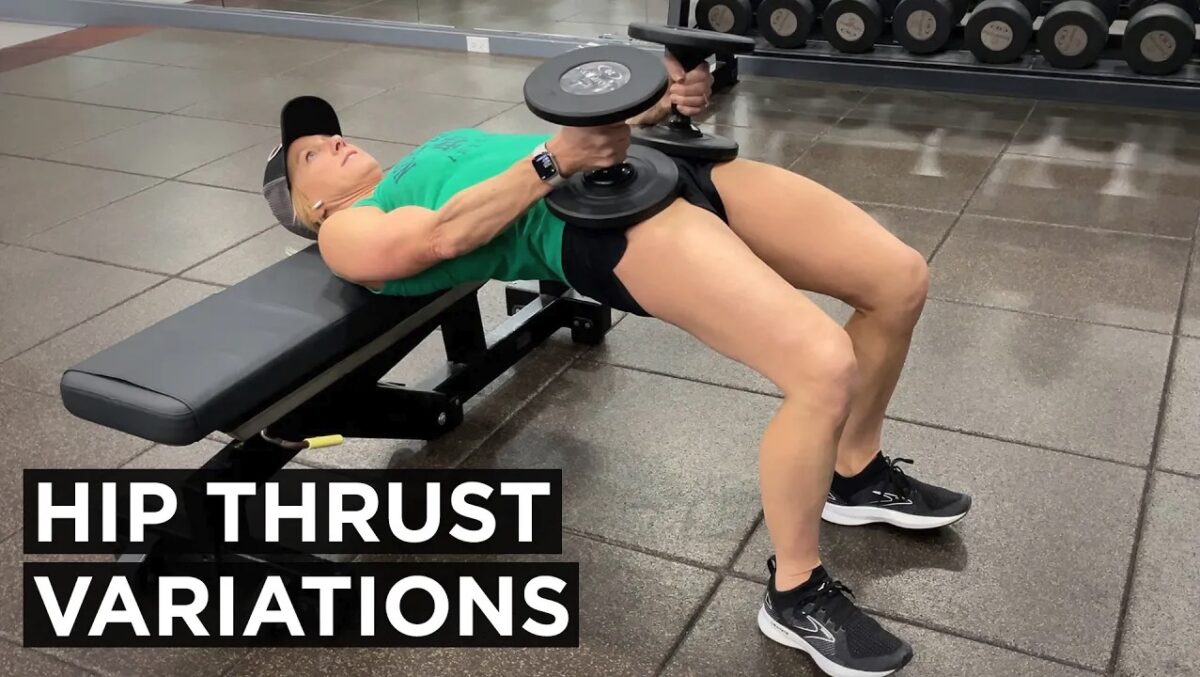How to Hip Thrust with Barbell, Machine, or Dumbbells
Proper Form & Variations from Hip Thrust Machine to Barbell Hip Thrust
The hip thrust exercise has become increasingly popular in recent years, thanks in part to its ability to target the glutes and build a stronger, more defined posterior chain. Unlike traditional exercises like squats and lunges, which primarily work the quads and hamstrings, the hip thrust places a greater emphasis on the glutes, which are some of the largest and most powerful muscles in the body. By performing hip thrusts regularly, you can increase your lower body strength, improve your athletic performance, and also enhance your overall aesthetic appearance.
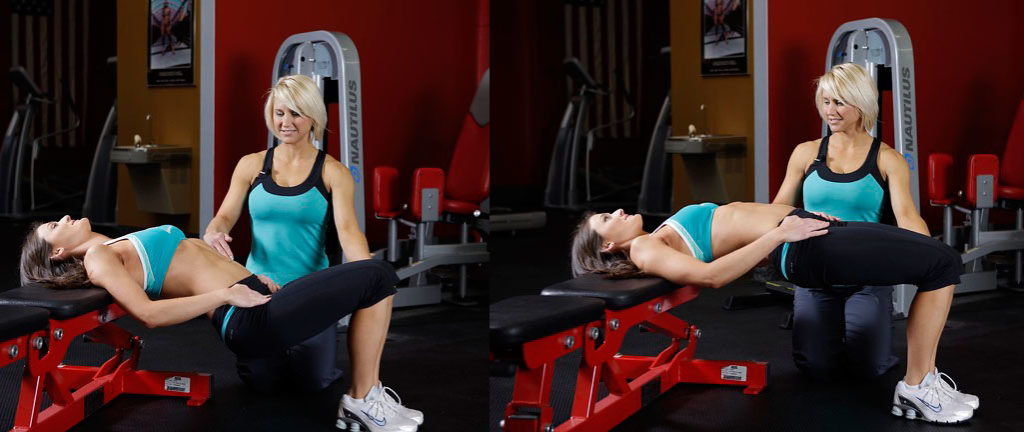
How to do a Hip Thrust or Flat Bench Glute Pulse
Here is a step-by-step guide on how to perform a hip thrust or flat bench glute pulse:
- Start by lying down on your back on a flat bench. Bend your knees and place your feet flat on the ground, hip-width apart.
- Begin the actual hip thrust by lifting your hips off the ground by contracting your glutes and core muscles. Keep your feet flat on the ground and your knees bent at a 90-degree angle.
- Lower your hips back down to the ground, but don’t let them touch the ground completely. Keep a slight tension in your glutes and core muscles throughout the entire hip thrust movement.
- Immediately lift your hips back up again, repeating the movement in a pulsing motion. The movement should be small and controlled, and you should feel a strong contraction in your glutes.
- Continue the pulsing motion for the desired number of repetitions or time. You can also hold at the top of the movement for a few seconds before lowering down.
- To perform a hip thrust, you can increase the range of motion by lifting your hips higher and squeezing your glutes at the top of the movement.
- Remember to keep your core muscles engaged throughout the exercise and avoid arching your back.
- Once you’ve completed the desired number of repetitions, slowly lower your hips back down to the ground and rest for a few seconds before starting the exercise again.
Remember to start with a lighter weight or no weight at all, and gradually increase the weight as you become stronger and more comfortable with the movement. Additionally, it’s important to focus on proper form and technique to avoid injury and get the most out of the exercise.
What muscles do hip thrusts work?
Hip thrusts primarily target the gluteus maximus, which is the largest muscle in the buttocks. They also work the hip extensors, which include the hamstrings and adductor magnus muscles. Additionally, hip thrusts engage the core muscles, including the rectus abdominis and the erector spinae, as stabilizers during the exercise.
By working these muscle groups, hip thrusts can help to improve the strength and size of the glutes, enhance athletic performance, and reduce the risk of injury in the lower back, hips, and knees.
What are some watch outs if you want to use proper form in a hip thrust?
When performing hip thrusts, it’s important to keep a few things in mind to avoid injury and maximize the effectiveness of the exercise. First and foremost, make sure you’re using proper form. Keep your back straight, avoid arching or rounding it, and don’t flare your ribs or thrust your hips too high. Start with a lighter weight or no weight at all if you’re new to the exercise, and gradually increase the weight as you become stronger and more comfortable with the movement.
When beginning to incorporate a hip thrust into your leg workouts, make sure to warm up your glutes, hamstrings, and lower back muscles before starting, and adjust the height of the bench to ensure your knees and hips are aligned in the starting position. Keep your feet flat on the ground, hip-width apart, and avoid jerking or sudden movements during the exercise. After completing your flat bench hip thrusts, take some time to cool down by stretching your glutes, hamstrings, and lower back muscles.
What are the best hip thrust variations for glutes?
1. Hip Thrust Machine with Belt
Hip Thrust Machine with Belt: This variation is performed using a hip thrust machine with a belt to secure the weight. Start by sitting in the machine and adjusting the weight to a comfortable level. Place the belt around your waist and sit with your back against the pad. Place your feet on the footrests and push your hips up until they are level with your knees. Lower your hips back down to the starting position and repeat. Want to know specifically how to use a hip thrust machine with a belt? Be sure to watch my Hip Thrust Variations video!
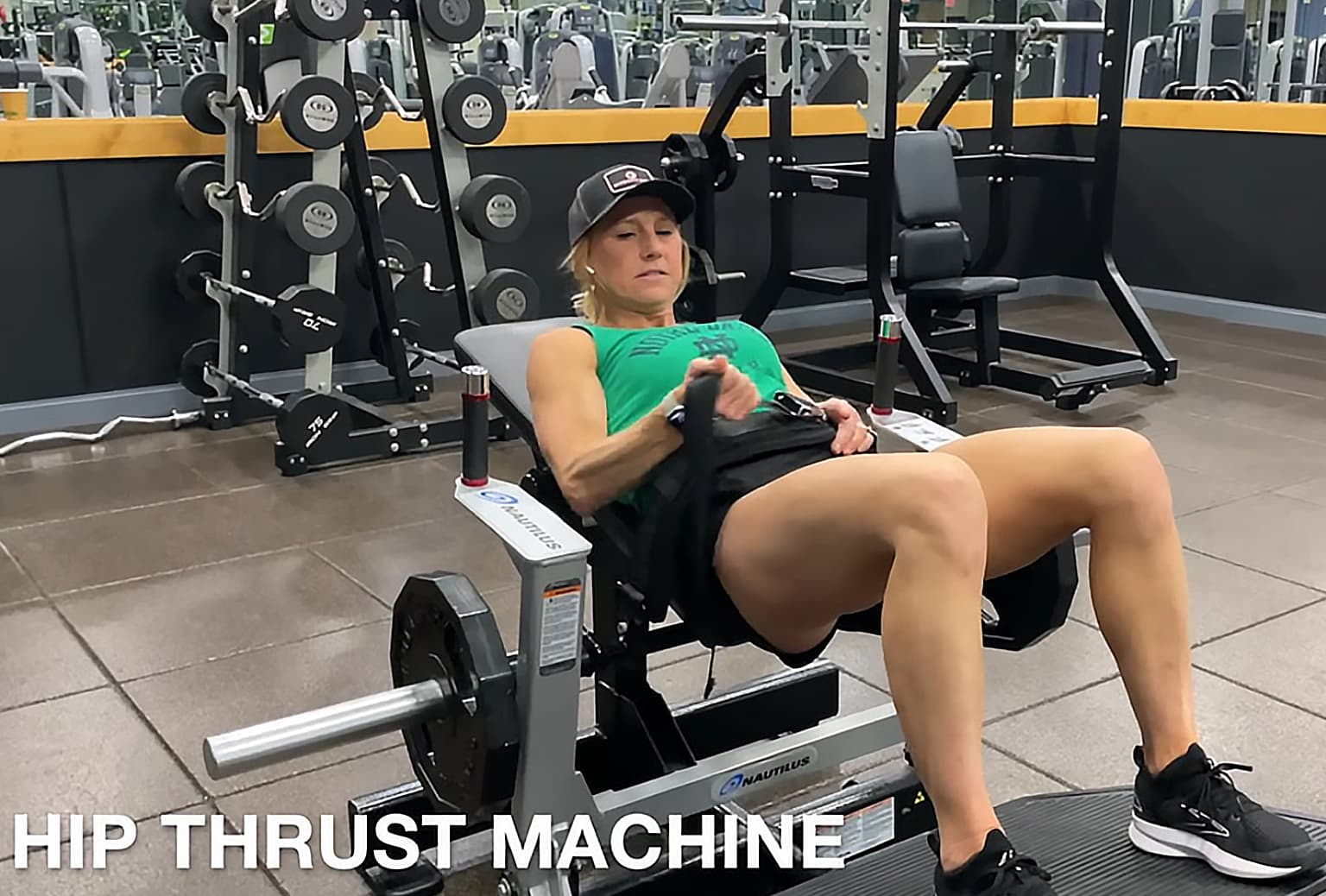
2. Barbell Hip Thrusts
The Barbell Hip Thrust variation is performed using a barbell. Using a barbell for a glute hip thrust can be beneficial for several reasons. First and foremost, a barbell allows you to easily increase the weight you’re lifting, which can help you build strength and muscle mass in your glutes over time.
In addition, using a barbell can help you maintain proper form during the exercise. Placing the barbell across your hips can help to keep your weight centered and distributed evenly, reducing the risk of tipping or losing balance. Using a barbell for hip thrusts or glute pulses can also increase the range of motion during the exercise, allowing you to lift your hips higher and engage your glutes more effectively. This can lead to greater muscle activation and better results.
Finally, barbell hip thrusts can be more comfortable for some people than using other equipment such as dumbbells or kettlebells. The weight is evenly distributed across your hips, reducing pressure on your hands and wrists.
Overall, using a barbell for glute hip thrusts can be an effective way to build strength and muscle mass in your glutes, maintain proper form, increase range of motion, and reduce discomfort during the exercise. This allows you to use a significant amount of weight in a controlled manner.
How to do a barbell hip thrust:
To complete the barbell hip thrust, begin by sitting on the floor with your back against a bench. Roll the barbell over your legs and place it across your hips. Place your feet flat on the ground and lift your hips off the ground until they are level with your knees. Lower your hips back down to the starting position and repeat.

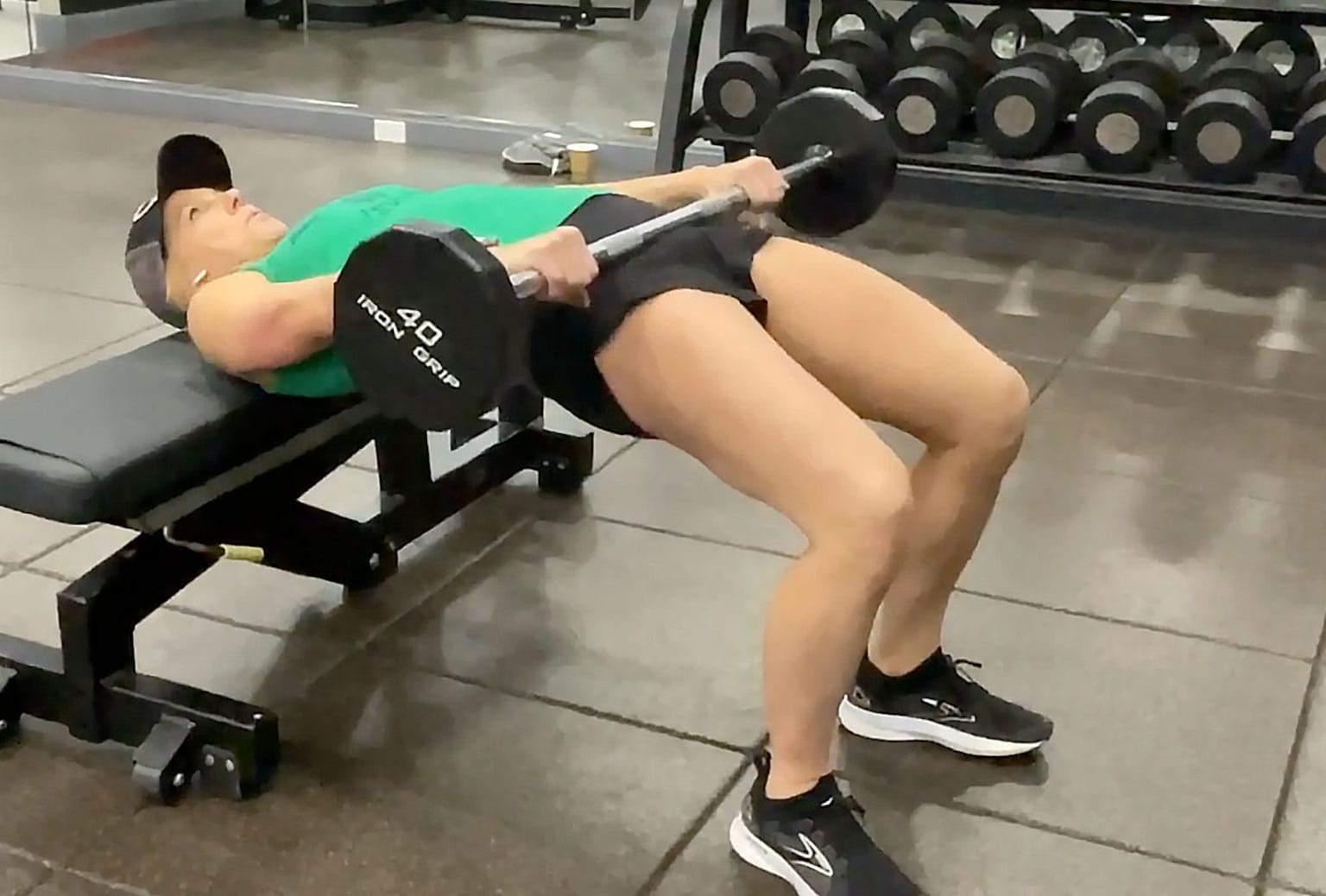
3. Dumbbell Hip Thrust or Glute Pulses
Dumbbell Hip Thrusts: Using dumbbells for glute hip thrusts can be a great alternative to using a barbell or hip thrust machine, and can offer several benefits. Firstly, it provides a great variety for your workout, and can add some freshness and new challenges to your routine. Secondly, it can be more convenient as dumbbells are a very versatile piece of equipment that can be used for a wide range of exercises. Using dumbbells can also offer greater mobility and range of motion than using a barbell, as you can adjust the position of the weights to find the most comfortable and effective position for your body.
Additionally, using dumbbells requires more stabilization from your core and other supporting muscles, which can lead to greater activation of those muscles and a more challenging workout. Finally, you can target specific areas of the glutes by adjusting the placement of the dumbbells, making it a versatile exercise for building glute strength and mass.
How to do a dumbbell hip thrust:
Begin by sitting on the floor with your back against a bench. Hold the dumbbells on your hips and place your feet flat on the ground. Lift your hips off the ground until they are level with your knees. Lower your hips back down to the starting position and repeat.
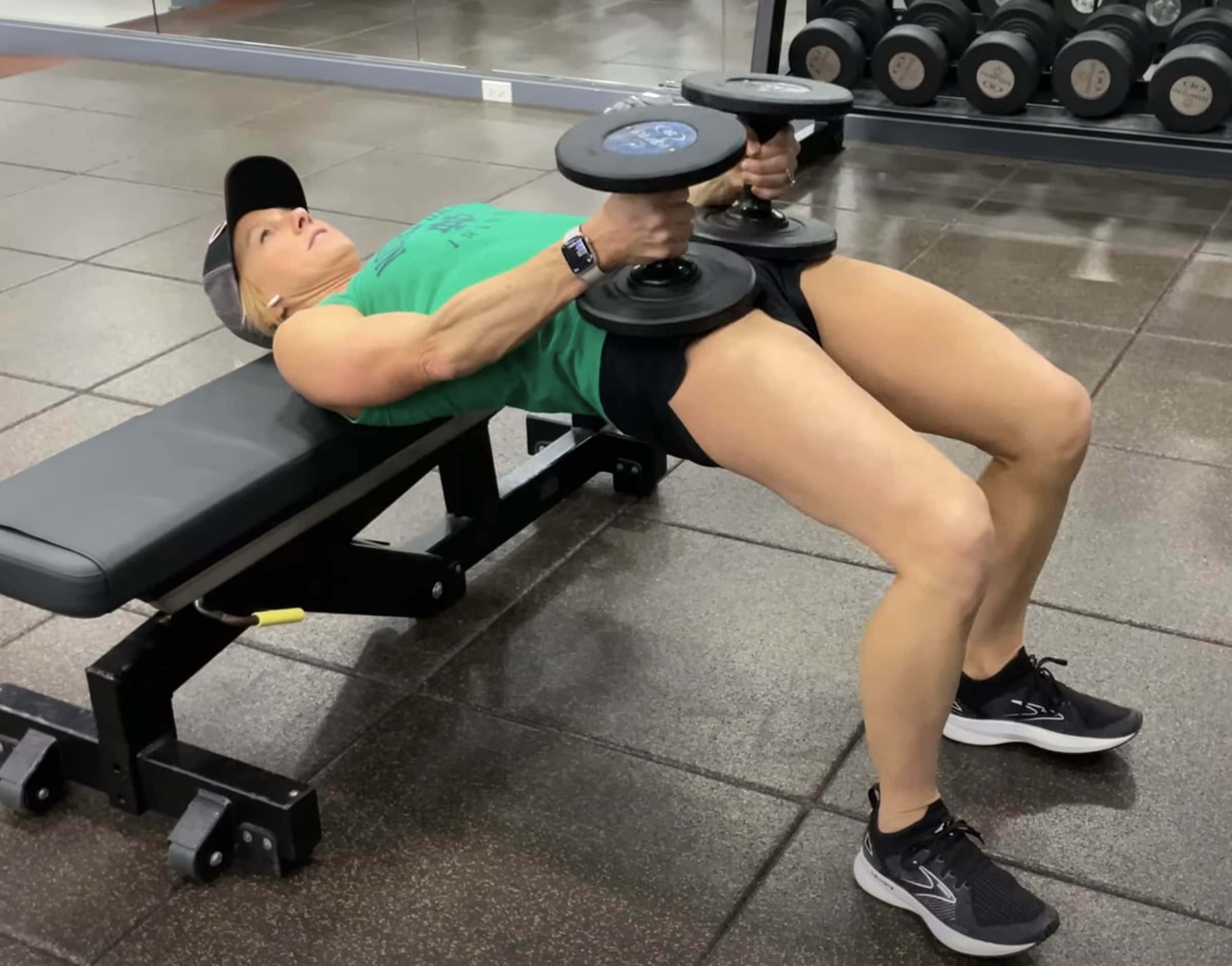
Kettlebell Hip Thrusts
This variation of the hip thrust is performed using a kettlebell. Using a kettlebell for a hip thrust can be beneficial for several reasons. Firstly, the unique shape of a kettlebell allows for a wider range of motion and increased activation of the glutes compared to a traditional barbell or dumbbell. This can lead to greater muscle activation and faster progress in building strength and muscle mass in the glutes. Secondly, the handle of the kettlebell can provide a comfortable grip and reduce pressure on the hands and wrists during the exercise.
Additionally, using a kettlebell for hip thrusts can be a convenient option, as it is a relatively small piece of equipment that can be easily transported and used in a variety of settings. Lastly, kettlebells come in a range of weights, allowing you to gradually increase the weight as you build strength and improve your form, leading to continued progress and results. Overall, using a kettlebell for hip thrusts can be an effective and versatile way to build glute strength and mass, improve range of motion, and reduce discomfort during the exercise.
How to do a kettlebell hip thrust:
Begin by sitting on the floor with your back against a bench. Hold the kettlebell with both hands and place it on your hips. Place your feet flat on the ground and lift your hips off the ground until they are level with your knees. Lower your hips back down to the starting position and repeat.
Q: What is the difference between using a hip thrust machine vs barbell?
Using a hip thrust machine versus a barbell for hip thrusts presents some differences in terms of setup, ease of use, muscle activation, and accessibility, each offering unique benefits and potential drawbacks. Here’s a breakdown of the main differences:
1. Setup and Ease of Use – Hip Thrust Machine Versus Barbell
Hip Thrust Machine: These machines are specifically designed for the hip thrust exercise, providing a more straightforward setup. Users simply need to adjust the machine to fit their body size and start exercising. The learning curve is generally lower, making it more accessible for beginners.
Barbell: Requires more setup, including positioning the barbell, adding the desired weight plates, and often using a bench or platform to support the upper back. A padded barbell or cushion is also recommended to protect the hips, which adds another layer to the setup process. The setup and execution demand a bit more experience to perform correctly and comfortably.
2. Muscle Activation – Hip Thrust Machine Versus Barbell
Hip Thrust Machine: Designed to target the glutes specifically, but depending on the machine design, it might not allow for as much range of motion or variability in exercise modification as free weights. The machine guides the movement, which can be beneficial for beginners but might limit the engagement of stabilizing muscles.
Barbell: Allows for a full range of motion and can engage more muscles due to the instability of the barbell. This can lead to greater activation of the glutes and hamstrings, as well as the core and lower back muscles for stabilization. The ability to adjust foot positioning also allows for targeting different areas of the glutes.
3. Accessibility – Hip Thrust Machine Versus Barbell
Hip Thrust Machine: Not all gyms have hip thrust machines, which can limit accessibility. However, when available, they offer a quick and easy setup.Barbell: Barbells and weights are standard equipment in most gyms, making them more accessible. Additionally, barbells offer versatility as they can be used for a wide range of exercises beyond hip thrusts.
4. Weight Range and Progression – Hip Thrust Machine Versus Barbell
Hip Thrust Machine: The weight adjustment is often straightforward, allowing for easy progression or regression. However, the maximum weight available can be limited by the machine’s design.
Barbell: Offers a wide range of weight adjustments, from very light to very heavy, allowing users to progress at their own pace. This versatility can be particularly beneficial for those looking to continuously challenge their muscles with heavier weights over time.
5. Safety and Comfort – Hip Thrust Machine Versus Barbell
Hip Thrust Machine: Generally considered safer for beginners as the machine guides the movement, reducing the risk of improper form and injury. The machine is also designed to distribute weight evenly, potentially offering greater comfort during the exercise.
Barbell: While offering greater versatility, it requires proper form to avoid injury. The use of heavy weights without a spotter can also increase the risk of injury. However, the discomfort from the bar can be mitigated with proper padding.In summary, the choice between a hip thrust machine and a barbell depends on personal preferences, goals, experience level, and availability of equipment. Beginners may find machines more approachable, while those seeking maximum muscle activation and progression might prefer the versatility of a barbell.

